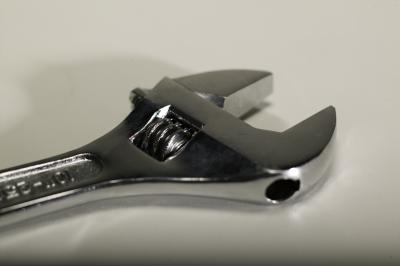
Power steering comes standard on most modern vehicles, but years ago it was an optional convenience even on large, heavy vehicles where power steering was almost a necessity. The main component of a power-steering system is the pump, which also acts as a fluid reservoir. The pump pressurizes the power-steering fluid and pushes it through high-pressure hoses to the steering box, giving you the extra assist needed to turn the steering wheel. Any air getting into the power-steering system will be compressed by the pump, giving the steering a spongy, unresponsive feel. The air needs to be removed from the system to get your power steering back on track.
Open the hood and check the level of the power-steering fluid by removing the power-steering reservoir cap. Add the correct fluid recommended in your owner’s manual to bring the level up to the full mark. Be aware that fluid that looks foamy is an indication of air in the system. Replace the cap.
Locate the power-steering bleed valve on top of the steering box near the bottom of the engine bay. Follow the power-steering, high-pressure lines from the power-steering pump to the steering box if you have trouble locating it.
Push a 6-foot length of rubber hose onto the end of the bleed valve. Run the other end of the hose into a drain pan.
Start the engine. Loosen the bleed valve fitting slightly with an adjustable wrench in a counterclockwise direction. Turn the steering wheel all the way to its stop one way and then the other several times. Shut the engine off.
Close the bleed valve by tightening it with an adjustable wrench in a clockwise direction. Remove the power-steering reservoir cap, and add fluid to bring the level up to the full mark.
Observe the power-steering fluid that came out of the rubber hose into the drain pan. Repeat the above procedure if there are air bubbles in the fluid. Close the bleed valve and remove the rubber hose when there are no air bubbles in the fluid expelled from the bleed valve. Close the hood.